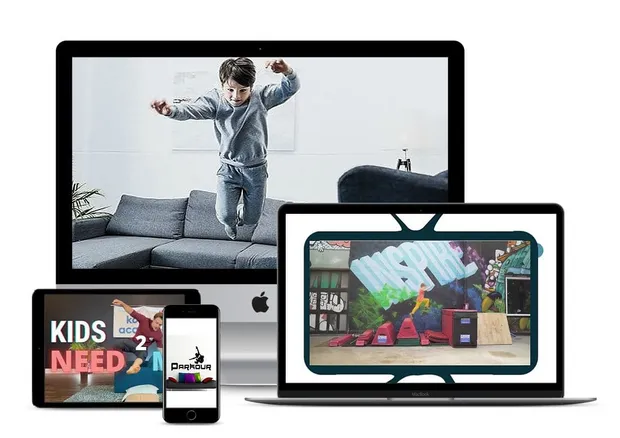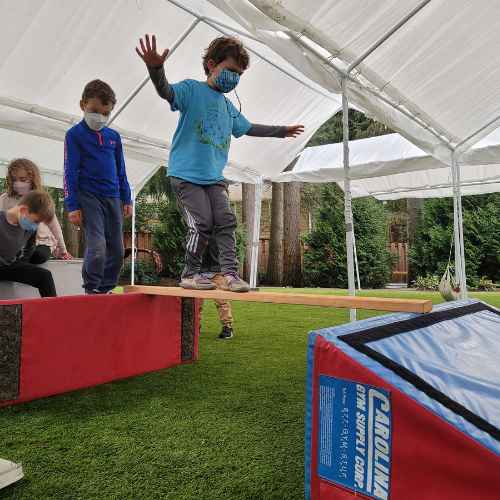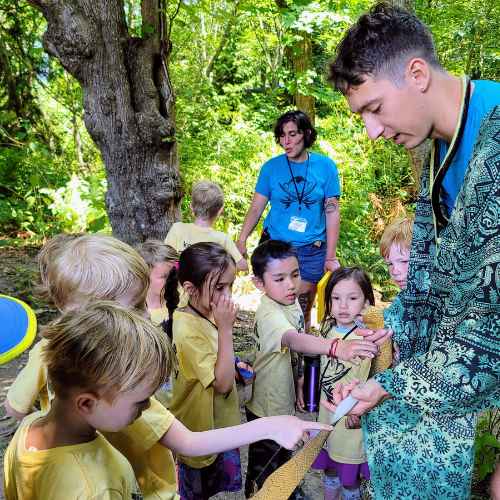
Raising emotionally healthy children involves nurturing their empathy. Understanding empathy and its development stages is essential as it shapes how kids relate to others and manage their own emotions. In this blog, you will learn what “empathy development stages” truly mean, focusing on critical aspects such as recognizing facial expressions, developing emotional empathy, and more. This insight will help you support your child’s emotional growth and enhance their interpersonal relationships.
What Exactly is Empathy?
Empathy is the ability to understand and share the feelings of another person. It plays a pivotal role in building relationships, resolving conflicts, and fostering emotional intelligence. It has two main components:
- Emotional Empathy: This is the instinctual capacity to feel what someone else is experiencing. It allows you to sense the emotions of others by mirroring those feelings.
- Cognitive Empathy: Also known as perspective-taking, cognitive empathy involves understanding another person’s emotions and point of view intellectually, rather than feeling them directly.
Together, these aspects of empathy enable individuals to navigate social situations effectively and maintain healthier relationships.
Understand the Journey for Empathy Development
Empathy isn’t an innate trait, it’s a skill that develops as children grow. Observing changes in how children use and understand facial expressions offers a fun and insightful way to track their empathy development. Here’s what to watch for as your child progresses through different empathy development stages:
Pre-K to Age 6
- Recognition of Basic Emotions: Young children start to recognize and mimic facial expressions that convey basic emotions such as happiness, sadness, anger, and fear.
- Response to Emotions of Others: Children begin to show concern for others in distress, often trying to comfort peers or seeking help from adults.
Ages 7-10
- Understanding Complex Emotions: Children develop the ability to understand more complex emotions and social cues through facial expressions. They start to grasp situations that involve jealousy, pride, or embarrassment.
- Appropriate Emotional Responses: As they grow, children learn to respond more appropriately to others’ emotions. They practice empathy through verbal support or actions to help soothe or cheer up their peers.
Why It’s Important
Understanding the stages of empathy development is crucial because it directly impacts children’s ability to build and maintain relationships, collaborate with peers, and navigate social nuances. By supporting your child’s empathy development, you are helping them grow into compassionate, socially aware individuals.
Emotional Empathy: At the Heart of it All
Emotional empathy is the core element that enables us to feel and share the emotions of others. This type of empathy allows children to not just see but feel what others are experiencing as if those emotions were their own. Here are some key aspects of emotional empathy and how it develops in children:
Feeling With Others
From a young age, children can exhibit signs of emotional contagion; meaning, they instinctively cry or show distress, mimicking when they hear another child crying. This initial reaction evolves into a deeper understanding of shared feelings.
Mirroring Emotions
As kids grow, they learn to mirror the emotions they observe in others, leading to more nuanced emotional responses. For example, they might feel genuine sadness when a friend loses a pet or joy when a sibling wins a game.
Empathetic Concern
This is a more advanced form of emotional empathy where children not only feel what others are feeling but are also compelled to help or comfort them. This shows a significant development in their emotional intelligence and social skills.
How Kids Interpret Emotions
Children process emotions in unique ways, and their ability to interpret both positive and negative feelings evolves significantly as they grow. Here’s a look at how children understand and react to different emotions, along with the changes throughout various empathy development stages:
Processing Positive Emotions
Young children are quick to join in laughter or excitement, showing that they can feel and reflect positive stimuli from others. This participation helps them bond with peers and learn social cues through shared joyous experiences.
Handling Negative Emotions
Children’s responses to negative emotions can vary widely. Some may become overwhelmed and react strongly to scenes of distress, while others might withdraw or appear indifferent. Teaching children to identify and express these emotions constructively is key to developing their emotional side.
Variations in Empathic Responses
Not all children develop empathy at the same pace or in the same way. Factors such as personality, upbringing, and social environments play significant roles. For instance, children who are more sensitive may naturally exhibit higher levels of empathy, whereas those with less exposure to diverse social settings may need more guidance in interpreting emotions.
Practicing Empathy—How Kids React in Different Situations
Empathy is a skill that children practice and refine through their reactions to various scenarios. Observing how children respond to different emotional cues provides insight into their empathetic development. Here’s how kids might react empathetically in a range of situations:
Reacting to Positive Signals
As mentioned earlier, children often mirror the joy or excitement of their peers, which can be seen in group activities or celebrations. This mirroring is a fundamental form of empathy, showing they understand and share in the happiness of others. Providing positive reinforcement when children show empathy can help encourage these behaviors, making empathy a more ingrained part of their interactions.
Responses to Painful Situations and Negative Emotions
In situations where others express pain or sadness, empathetic children might offer comfort through words, a hug, or by fetching an adult for help. This indicates their ability to not only recognize distress in painful situations but also the willingness to alleviate it. Some children might also reflect the distress they see, feeling genuinely upset when others are hurt or sad, which is a deep form of emotional empathy.
Empathetic Responses in Social Conflicts
During conflicts with peers, empathetic children are more likely to seek peaceful resolutions. They may naturally take on the role of mediator, trying to understand and articulate the feelings of all parties involved.
These children are also more likely to compromise or change their behavior if they understand that it has hurt someone else, showing a high level of social and emotional maturity.
Boosting Empathy in Your Kids
Nurturing empathy in children is an ongoing process that can be integrated into daily activities and interactions. Here are some practical tips and fun exercises to help your child’s empathy development stages:
Model Empathetic Behavior
Demonstrate empathy in your everyday interactions, not just with your child but with others as well. Let your child see you expressing concern and understanding for friends, family members, and even strangers.
Discuss Emotions Openly
Make it a habit to talk about both positive and negative emotions at home. Ask your child how they felt during different parts of their day and discuss various emotional responses to situations. This open dialogue encourages them to think about and understand their own and others’ emotions.
Read Together
Share books that explore a range of emotions and perspectives. Discuss characters’ feelings and motivations, asking questions like, “How do you think she felt?” or “What would you do in his place?” This builds both emotional and cognitive empathy.
Role-Playing Games
Engage in role-playing games where your child can act out scenarios to understand the different dimensions of empathy. This could involve dealing with a friend who is sad or deciding what to do if they see someone being bullied. Role-playing helps children easily put themselves in others’ shoes.
Use Media as a Teaching Tool
Watch videos that highlight empathetic themes and discuss them afterwards. Talk about the characters’ feelings and actions, and relate them to real-life situations your child might face.
Encourage Caring Actions
Provide opportunities for your child to help others. This could be assisting a family member, doing chores for a neighbor, or participating in community service. Acts of kindness and compassion can deepen empathic responses.
Play Cooperative Games
Choose games that require players to work together to achieve a common goal. These games often necessitate emotional understanding and supporting one another, fostering a sense of empathy among participants.
Overcoming Obstacles and Embracing Diversity
As children grow, they may encounter various challenges in their development of empathy. Understanding these common obstacles and knowing how to support kids is crucial.
Recognizing Emotional Blocks
Some children might struggle with empathy due to emotional blocks or difficulties in processing their feelings. It’s important to identify any signs of distress or withdrawal that may indicate such blocks. Provide a safe space for your child to express their feelings, and consider seeking guidance from a child psychologist if you notice persistent issues.
Dealing with Diverse Levels of Empathy
Children develop empathy at different rates, and some may naturally find it harder than others. Acknowledge that each child is unique and may require different types of support. Tailor your approach based on your child’s specific needs. Some may benefit from more direct teaching about emotions, while others might need more opportunities to practice in a controlled setting.
Educating About Cultural and Emotional Diversity
Introduce your child to stories and activities that include diverse characters and settings. Discussing cultural differences and similarities can help children understand and empathize with people from various backgrounds. Encourage your child to ask questions and explore differences in empathy to foster an inclusive attitude.
Handling Peer Influence
Be proactive in discussing your child’s interactions with friends and how they handle conflicts or emotional situations. Encourage your child to stand up for friends and show kindness, even when peer pressure might push them towards indifference or exclusion.
Practicing Resilience and Flexibility
Teach your child that overcoming interpersonal challenges is a part of life. Help them learn from situations where their empathetic efforts might not have helped as expected. Use setbacks as opportunities to discuss what might be done differently next time, emphasizing that empathy is a skill that can always be improved.
Empathy is more than just a social skill; it’s the cornerstone of your child’s emotional and interpersonal development.
- Emotional Intelligence: Empathy equips children with the emotional intelligence needed to handle their feelings and understand those of others, crucial for personal and professional success.
- Relationship Building: It enables children to build and maintain healthy relationships, enhancing their social experiences throughout their lives.
- Moral Development: Empathy is foundational to developing a strong sense of morality and ethics, guiding smart decisions and actions.
To further support your child’s journey throughout all empathy development stages, consider enrolling them in Kong Academy. Our programs are designed to blend educational content with real-world applications, making learning both fun and impactful. Explore our offerings and watch your child thrive in an environment that truly celebrates emotional growth!
GET Access to the ULTIMATE PLAY DATE PACKAGE (Value: $49) for FREE!


7-Day Crystal Shard Adventure
Unleash your child’s potential with our 7-day crystal shard movement adventure!




